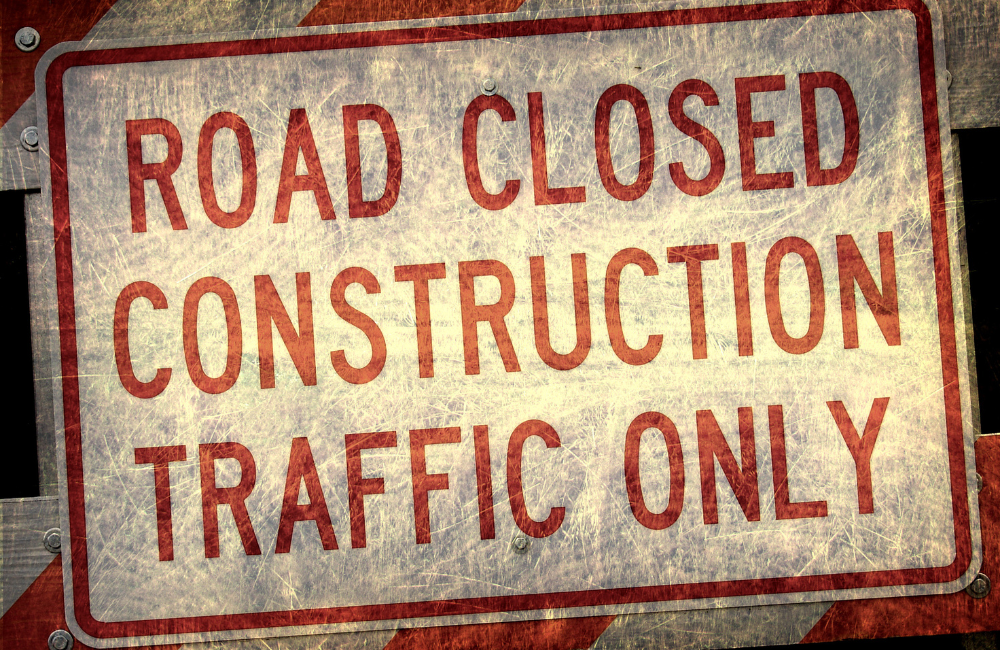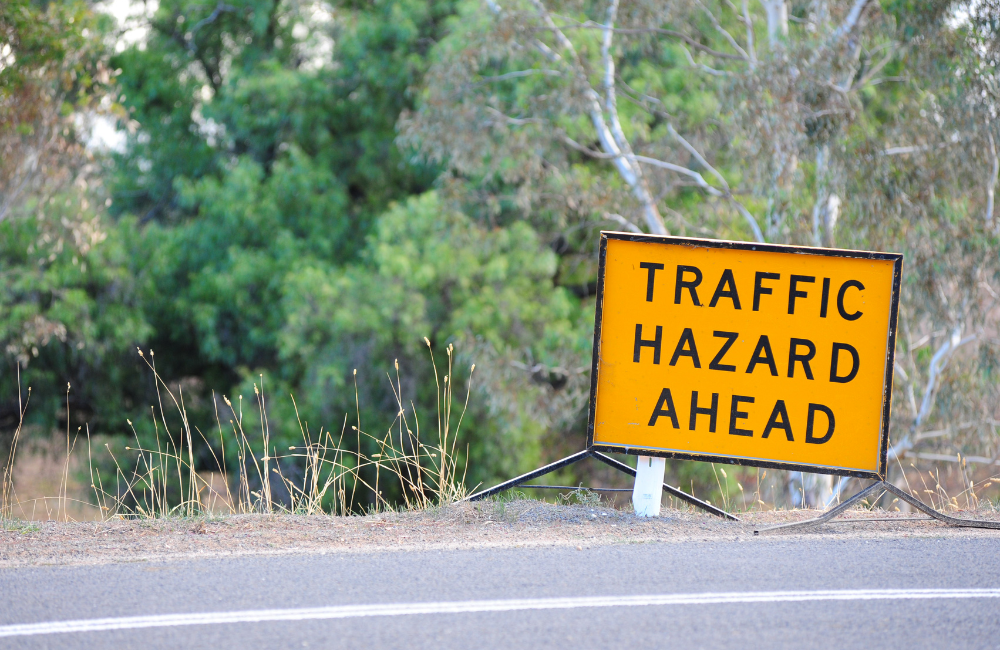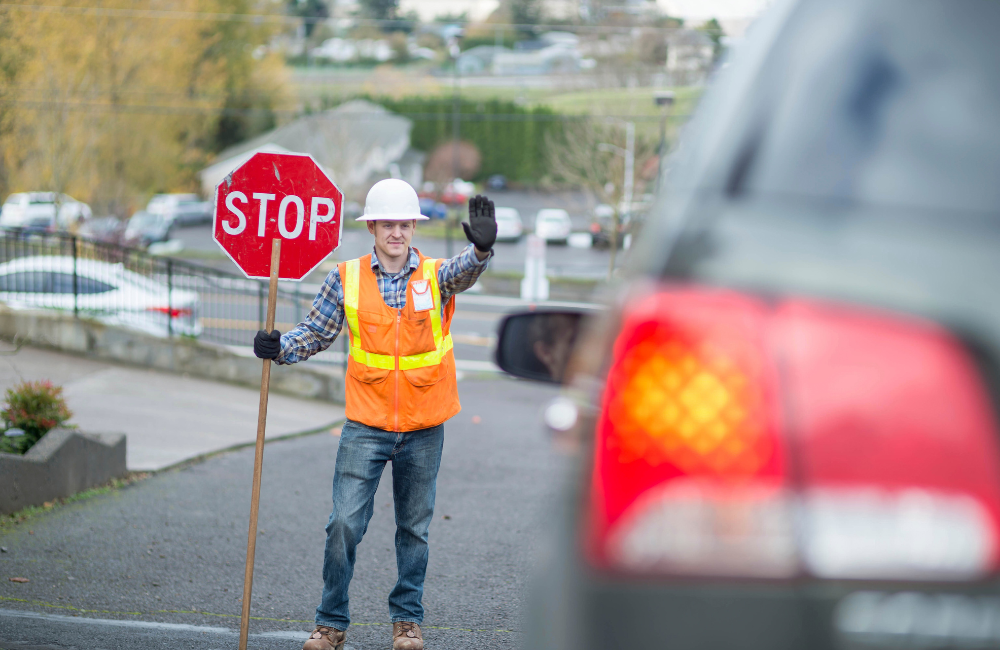Get A Free Quote
1300 007 782
Call Us On:
1300 007 782G10/RMS Accredited
Competitive Rates
ZERO Accidents or Injuries
25+ years combined experience
50+ years combined experience
Competitive Rates
G10/RMS Accredited
ISO Certified

Construction sites are busy, noisy and frequently dangerous places. Professionals of all stripes work closely together, undertaking tasks like moving and shifting materials, using heavy machinery and specialised equipment, and building new homes and commercial premises from the ground up. Yet, as rewarding as a construction career is, it’s also a notably dangerous vocation. Up to 50 people per year are killed on Australian construction sites, with falls from heights the most common cause. As a person conducting business or undertaking (PCBU), you have a responsibility to keep your employees safe from the dangers present in construction work, including construction site roadway hazards.
Fortunately, it’s easy to take strong preventative steps when you’re armed with the right knowledge and tools. If you'll be working on or near the road, you need a traffic control plan for your construction site in Sydney. There are many ways to take precautions for construction site and roadway hazards. One of the most effective ways to ensure your safety strategy is solid is to call on the services of safety professionals.
SSTC is one of Sydney’s leading providers of construction traffic control services. Drawing upon years of experience and in-depth knowledge, we specialise in safety solutions for NSW businesses. This includes devising traffic management plans for construction sites. If you’re in the Sydney area and seeking a safer site among the city traffic, we have solutions for roadway hazards with our construction site traffic control.
Here are some very common construction site roadway hazards you’ll encounter on the job:
Reversing vehicles are a major risk factor on construction sites. The easiest protection against that is to avoid the need for vehicles to reverse at all, but that isn’t always practical. Other potential solutions include mirrors, cameras, sensors and reversing warning alarms.
Distracted drivers, aggressive drivers and drivers exceeding the speed limit can all become construction site roadway hazards when you’re working close to the road.
Any construction work that impedes the regular flow of traffic, pedestrians and cyclists is considered high-risk construction work. As the PCBU, you need a safe work method statement in place that states what kind of signs and safety measures you’ll use.

Night work, poor lighting or dust and debris in the air can make already risky work even more hazardous. Lighting conditions and visibility are factors you should always account for.
Inadequate planning for construction site roadway hazards can take many forms, including insufficient signage, no barricades, unsecured equipment, untrained staff, and a lack of traffic management plans. Without considering all the risks and making adequate preparations, there’s an awful lot that can go wrong when construction site roadway hazards are involved.
Uneven and poorly maintained roads replete with potholes, debris and other hazards add another level of risk for workers, pedestrians and motorists. While there’s a limit to what you can do about local road conditions, a traffic control plan for a construction site in Sydney should take considerations like traffic volume, road layout, speed limits and other regulations, and any other unique hazards into account.
Safe and efficient traffic construction control is more than a single strategy or approach. It’s an ongoing process that involves research, planning and adapting to challenges as they arise; however, there are definitely some key elements involved. Comprehensive planning is essential, for example, coming up with a traffic management plan for construction sites. Clear communication is a must every step of the way, from the language used in safety and training documents to the effective use of signals and signs. Regular inspections are an important part of maintaining safety standards, and it’s always important to be prepared for emergencies as well.
Some of our tips for protecting your workers, pedestrians and public traffic from construction site roadway hazards include:
Keeping people and transportation separate sounds simple in theory, but it’s not always easy in practice. Some measures you can try include placing clearly marked barriers between pedestrian and transport zones, establishing traffic-only routes, and using measures like barricades and traffic cones.
When it’s impossible to separate people and traffic completely, putting control measures in place for vehicles and heavy equipment can help to reduce risks. One important step is traffic control at the site’s entry and exit points so that the flow of traffic can be monitored and vital information passed on.
To reduce the number of vehicles on-site at any given time, you can place fewer orders but include larger volumes in each order or schedule deliveries during quiet periods.
Traffic management equipment is a broad category that can include traffic signs, electronic equipment, barriers, rails, portabooms and delineators. The different types of traffic control equipment are varied. A traffic control plan for your construction site in Sydney will help you determine which forms of equipment are best suited to your site.
A construction traffic control management plan is a key ingredient in the success of your Sydney construction site. All workers on the site should be aware of what the CTMP says. It’s best to organise a meeting to go over it and regular meetings after that to follow it. If you need any assistance with the traffic management plan for your construction site, help is at hand with SSTC.
The construction traffic control management plan (CTMP) lays out the risks involved in your construction project and the measures and procedures you’ll put in place to prevent them. It’s designed to ensure the safety of your employees and the public while minimising traffic disruptions for all road users. Tailored to the needs of each construction project, it includes safety measures such as traffic routing, detours, traffic management equipment and emergency procedures.
Having this plan in place is not only a legal requirement if you’re working near traffic, but it’s also the most effective way to defend against safety hazards and reduce the risks for your team and the public. With a CTMP, you can embark on even the toughest construction projects well-prepared.

SSTC is one of the leading providers of construction traffic control services in Sydney. Our team of experienced traffic control professionals create and implements construction traffic management plans that maintain efficient traffic flow while prioritising the safety of everyone involved. Our detailed plans include every aspect of traffic control from start to finish, with attention to detail that’s second to none.
SSTC takes a full-service approach to traffic control for your construction project. We provide traffic management plans along with equipment and controllers. Working closely to ensure all of our traffic control plans and measures comply with the Australian Standards for Traffic Control Devices (AS1742), we take the hassle out of acquiring permits from governing bodies such as the Police, Council and TMC.
For comprehensive traffic control plans for your Sydney construction site, contact the SSTC team for a free quote.